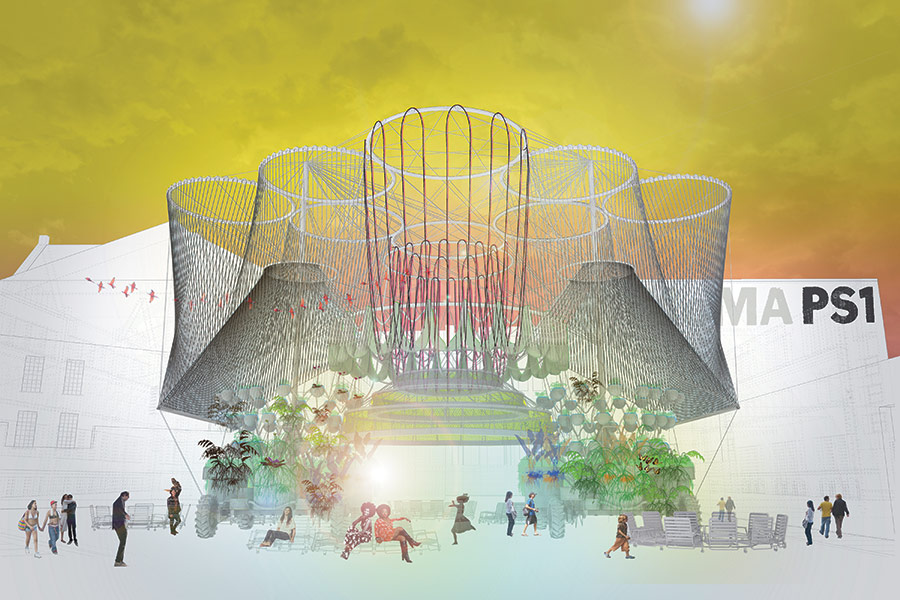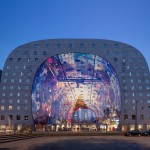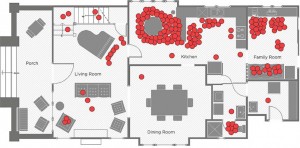This blog is primarily concerned with the transition from drawing to computational tools in architecture. My book, The Death of Drawing: Architecture in the Age of Simulation, explores this subject in depth and identifies it as part of a pervasive cultural trend towards simulation as opposed to representation as our general mode of experience. The book is chiefly concerned with the cognitive effects of this change on design thinking, but it has many other consequences for architects as well. One of these, highlighted in The Glass Cage: Automation and Us by Nicholas Carr, is the effect that certain automated systems (so-called “expert systems”) have on the functioning of their operators. Carr discusses this effect in several contexts: driverless cars, aviation, medicine, social life and, yes, architecture. He cites research that demonstrates a few worrying effects of these systems. Among these:
Technological adaptation. People and institutions tend to adapt themselves to the demands of technologies they use rather than demanding that technology be designed to help them work as they normally would. This sounds like a choice, but in practice very few individuals or groups can design software for their specific needs. Software vendors cannot afford to tailor their products to the needs of specific individuals or groups. At best, they can provide features that most of their customers want and flexibility to allow others to adapt the software to their needs. Past a certain (quickly reached) point, adapting even the most user-friendly software is beyond most users.
The generation effect. The idea here is that we remember and learn better if we must actively provide some of the information we are trying to master. For example, simply rereading information is a far less effective way of learning than closing the book and recalling the information from memory. Our active cognitive engagement in learning heightens our retention and ability to use the information creatively. Most expert systems are designed to reduce the cognitive load on users, under the theory that this will reduce the number of errors they make. The generation effect says that, in the long run, this makes us dumber.
Deskilling. Carr describes studies in several domains demonstrating that reliance on automated systems results in their operators becoming less skilled. This is hardly surprising- by offloading tasks to an automated system, people’s skills get rusty from disuse. This has been of particular concern in aviation, where pilots are now required to spend a certain amount of time in manual control of their aircraft to keep their skills sharp.
Automation complacency and automation bias. Once we have an automated system to help us do a job, we tend to assume that it’s doing its job correctly. Instead of thinking a problem through for ourselves, we tend to accept the answer provided by the system. If there is a discrepancy between the system’s answer and our own (or a colleague’s), we tend to place more faith in the system. Computers, after all, don’t make mistakes (or so we think. This could be called the Fundamental Fallacy of Automation: the notion that a computer system always makes fewer mistakes than a human being doing the same task.)
You’re probably already thinking about how these effects manifest themselves in architecture. BIM in particular is taking on more features of an expert system with every new release. After all, the original rationale for BIM, and the reason for its rapid adoption in the mid-aughts, was a that it would reduce errors in architects’ drawings. Information-rich BIM families and objects reduce the information an architect needs to recall (bye-bye generation effect). Intelligent objects further reduce our cognitive loads by “knowing” rules that govern certain objects (e.g. standard door sizes) or how certain elements interact with others. I’m sure you have your own stories about how your firm has had to adapt its work processes to the requirements of BIM. I’ve heard many horror stories about mistakes made because someone assumed that the BIM software “knew” how to do something that turned out to be wrong.
As for deskilling, I’ll let you decide if this is taking place or not. Even if it is, it may be difficult to detect in the short run. There’s also an important question of whether what’s happening is deskilling or re-skilling. The skills required by modern design and construction are not necessarily those of the traditional architect. Students graduating from architecture schools that emphasize digital technologies may not know how to draw, but they have other skills that are needed for modern digitally-driven construction. For the record, I think they still need to learn to draw and draw well for reasons I discuss in the book.
Carr makes no attempt to account for automation and its tendencies in a broader context. He begins with the observation that we are making increasingly sophisticated use of automated systems in search of greater productivity. He calls for us to re-think how we design automated systems- to support rather than replace us. That’s a sound recommendation, but it doesn’t get at the root of the issue. What we are up against here is not merely a choice about technology, but an established cultural mode that values performance– the efficient achievement of some goal- over everything else. This is what technology does. The choice of goals is another matter. This calls for ethical values to be applied not only to the goals themselves, but also to the acceptable means of achieving them. This, as I’ve argued in a previous post, is a role only architects can play in the building industry and, indeed, our most important one.
The performative nature of BIM poses an enormous challenge to architects. If we stand idly by while the technology follows its natural course, we’ll eventually find ourselves redefined as BIM operators. We urgently need to discuss how to use BIM and other computational tools in order to maintain our ability to balance performance with other goals in our work. It’s past time we started this discussion.





 The notion of “data-driven” design gets a lot of press these days, as if what contemporary architects need is more quantitative knowledge about how people use buildings and spaces. This idea rests on misunderstandings of architecture so profound as to beggar belief. But since the idea is so common these days, it appears worthwhile to spell out exactly why it is not only wrong but harmful.
The notion of “data-driven” design gets a lot of press these days, as if what contemporary architects need is more quantitative knowledge about how people use buildings and spaces. This idea rests on misunderstandings of architecture so profound as to beggar belief. But since the idea is so common these days, it appears worthwhile to spell out exactly why it is not only wrong but harmful.